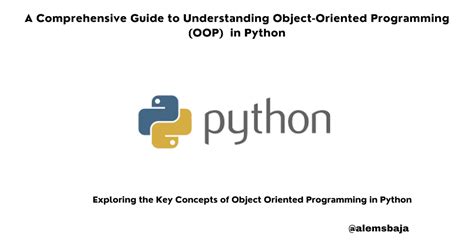Python, a versatile and widely-used programming language, empowers developers to create robust and maintainable applications. At the heart of Python’s object-oriented programming (OOP) model lies the concept of classes. Understanding class anatomy is paramount for leveraging Python’s OOP capabilities effectively.

What is a Class?
A class is a blueprint or template that defines the structure and behavior of a particular type of object. It encapsulates data (attributes) and methods that operate on that data. Objects, instances of a class, inherit the attributes and methods defined within their respective classes.
Anatomy of a Python Class
A Python class consists of the following components:
- Name: The name of the class, written in CamelCase, must start with an uppercase letter.
-
Body: The body of the class contains two types of statements:
- Attribute definitions: Declare and initialize the class’s attributes.
- Method definitions: Define the class’s methods, specifying their inputs, outputs, and functionality.
-
Constructor: A special method called
__init__is used to initialize an object upon its creation. -
Destructor: A special method called
__del__is called when an object is destroyed.
Importance of Class Anatomy
Understanding class anatomy is crucial for several reasons:
- Code reusability: Classes promote code reuse by encapsulating common attributes and methods, reducing redundancy.
- Encapsulation: Classes hide internal implementation details, ensuring that only essential data is accessible to external code.
- Modularity: Classes allow developers to organize code into logical units, enhancing maintainability and flexibility.
- Extensibility: Classes facilitate the creation of new subclasses that inherit and extend the functionality of their parent classes.
Common Mistakes to Avoid
While working with Python classes, common mistakes to avoid include:
- Mutable default arguments: Using mutable objects as default argument values can lead to unexpected behavior.
- Shadowing: Overriding an inherited attribute with a local variable with the same name may cause confusion.
-
Overriding
__init__without super().init(): Neglecting to call the parent class’s__init__method in a subclass’s__init__can result in incomplete object initialization. - Circular imports: Importing classes from each other can lead to circular dependencies and runtime errors.
Benefits of Using Classes
The benefits of using classes in Python development are numerous:
- Improved code organization: Classes group related attributes and methods, making code more organized and easier to understand.
- Enhanced code reusability: Once defined, classes can be reused in multiple parts of a program, saving time and effort.
- Increased code flexibility: Classes enable developers to extend and modify the functionality of existing code with relative ease.
- Reduced code complexity: Encapsulation and modularity provided by classes contribute to reducing the complexity of larger programs.
Applications of Python Classes
The versatility of Python classes extends to a wide range of real-world applications:
- Data modeling: Classes can represent complex data structures, such as employee records or product inventories.
- User interfaces: Classes can encapsulate GUI components, providing a structured and reusable approach to building user interfaces.
- Network programming: Classes can represent network connections, facilitating data exchange and communication.
- Game development: Classes can represent game objects, such as characters, enemies, and levels, enabling the creation of engaging and immersive game experiences.
FAQs
1. What is the difference between a class and an object?
A class is a blueprint for creating objects, while an object is an instance of a class.
2. Can a class have multiple constructors?
Yes, a class can have multiple constructors with different parameter lists.
3. Are class attributes inherited by subclasses?
Yes, subclasses inherit the attributes of their parent classes by default.
4. How can I prevent a class from being instantiated?
Use the __abstractmethods__ attribute to define abstract methods that must be implemented in subclasses.
5. What is the purpose of a __del__ method?
The __del__ method is called when an object is deleted to perform any necessary cleanup tasks.
6. Can a subclass override methods defined in a parent class?
Yes, a subclass can override methods inherited from a parent class by providing its own implementation.
Conclusion
A thorough understanding of Python class anatomy is fundamental for effective object-oriented programming. By leveraging the power of classes, developers can create modular, reusable, and extensible code. Utilizing classes in Python opens up a vast array of applications, from data modeling and user interfaces to network programming and game development. As you delve deeper into the world of Python classes, you will unlock new possibilities for building robust and maintainable software solutions.
Tables
| Table 1: Python Class Attributes |
|—|—|
| Attribute | Description |
|—|—|
| __dict__ | Dictionary of an object’s attributes and their values |
| __doc__ | Class documentation string |
| __name__ | Name of the class |
| __module__ | Name of the module where the class is defined |
| Table 2: Special Methods in Python Classes |
|—|—|
| Method | Description |
|—|—|
| __init__ | Constructor method |
| __del__ | Destructor method |
| __str__ | String representation of an object |
| __repr__ | Representation of an object for debugging purposes |
| Table 3: Python Class Hierarchy |
|—|—|
| Level | Description |
|—|—|
| Base Class | Parent class from which other classes inherit |
| Derived Class | Subclass that inherits from a base class |
| Multiple Inheritance | Class that inherits from multiple base classes |
| Table 4: Common Mistakes in Python Class Anatomy |
|—|—|
| Mistake | Description |
|—|—|
| Using mutable default arguments | Can lead to unexpected behavior |
| Overriding inherited attributes without using super() | May result in incorrect object behavior |
| Neglecting to call the parent class’s __init__ method | Can cause incomplete object initialization |
| Circular imports | Result in runtime errors due to dependency loops |
